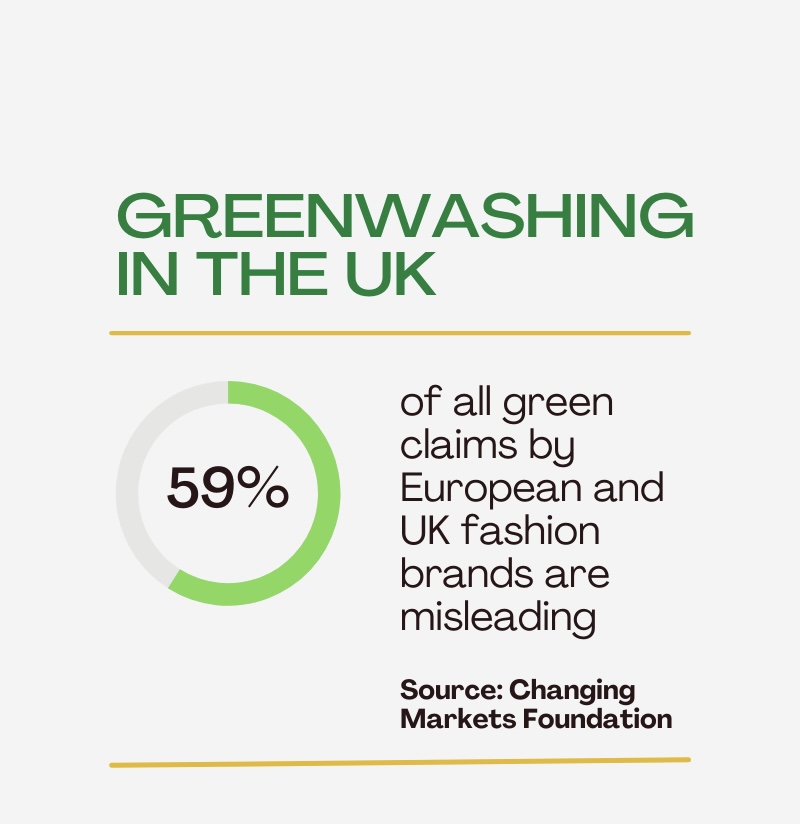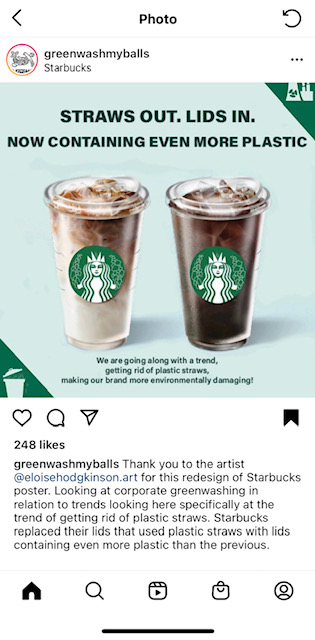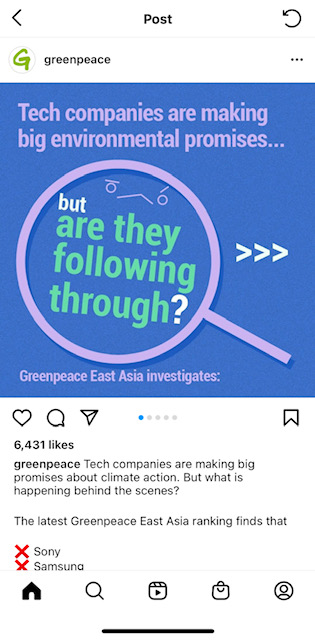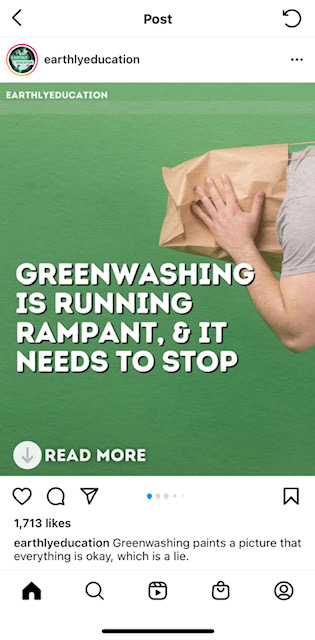In the wake of the COP26 Climate Conference, most people are trying to become more environmentally aware and do their part for the planet.
For some that means buying products from environmentally friendly companies but in doing so they’re likely to come across greenwashing.
Greenwashing means marketing something as eco-friendly or sustainable when it actually isn’t, fooling consumers into believing they are helping the environment by buying those products.
Sometimes it’s accidental but most of the time it isn’t.
According to a report released by the nonprofit Changing Markets Foundation, most popular fashion brands are “addicted to greenwashing.”
Using the UK Competition and Markets Authority’s new guidelines on green claims, the report also found that, of the 39% of products accompanied by a sustainability claim, an astonishing 59% defied green-claims guidelines in some way.

Online, many environmental organisations have called out companies for greenwashing on Instagram:




While some companies are trying to take on better environmental friendly practices, most of the responsibility and work still relies on us-the consumers.
So what do buyers need to be aware of to recognise greenwashing?
Here are five things you can do to spot greenwashing:
Be a skeptic
If a product has claims that seem too good to be true, then it probably is. For example, a lot of brands will market their products as 100% recyclable. What they don’t put on the label is that it’s only recyclable if it’s discarded properly.
This type of greenwashing tricks consumers through lack of transparency and poor label information.
Other labelling buzzwords to question include phrases such as “organic”, “socially responsible” and “natural.”
If you see these words don’t automatically assume they are accurate, take them with a pinch of salt and look for additional certification on the product.
Look for certified eco-labels
Some eco-labels will also include badges of approval from brands such as Fairtrade, Forest Stewardship Council (FSC), and Leaping Bunny amongst others, these certifications mean that the product has met specific criteria or international regulation standards.
If you see an eco-label you don’t recognise or are unsure about go online to cross check it.
Websites such as “Ecolabel index” tracks over 400 eco-labels in 199 countries so that you can look up what different eco-labels mean and the process behind its certification.
Research
Do your own research. This may sound obvious but it’s really important to do. A sure-fire sign of organisations greenwashing is when they really make you work for the facts you’re looking for.
If you can’t find any certification or the product label is vague such as saying “it’s good for the planet” but doesn’t say how then there’s probably something that they’re hiding.
Spend some time going to the organisation’s website and look for verified evidence of environmentally sustainable efforts or look at the product’s ingredients list for pollutants.
Mrinmayee Thakur, an Energy and Environmental Change MA student a the University of Westminster is currently writing a dissertation on greenwashing, she says “just because a product is expensive, we end up thinking more effort has gone into making it ‘green’, however, it might not be the case.”
“We have to depend on various fact checks, look for authoritative stamps (genuine ones and not just tick marks), check the brand’s website and see what exactly they are doing to make a product more sustainable.”
If you need to quickly double check something you can use apps like Ecolabel guide and Think Dirty-Shop Clean. These apps let you scan or search up products to see how green and sustainable they really are.
Remember natural is not necessarily eco-friendly
For example, products made with natural resources such as non-organic cotton and bamboo are often grown using harmful pesticides and chemicals.
Consumers need to be careful and not trick themselves into that just because a product is made with natural ingredients doesn’t automatically make it good for the environment.
These “natural” ingredients can often be used to distract our attention from what else is in the product; synthetic and toxic chemicals.
Seek out brands that take a consistent and holistic approach towards all of their products
If they are only selling a few eco-friendly products, it’s possible that they are only making them to be seen as environmentally conscious but are not making wider changes across their whole company.
Find out more about climate change from the Voice of London:
Words: Erin Kalejs | Subbing: Susanna Borio
Photo by: Anna Oliinyk on Unsplash

